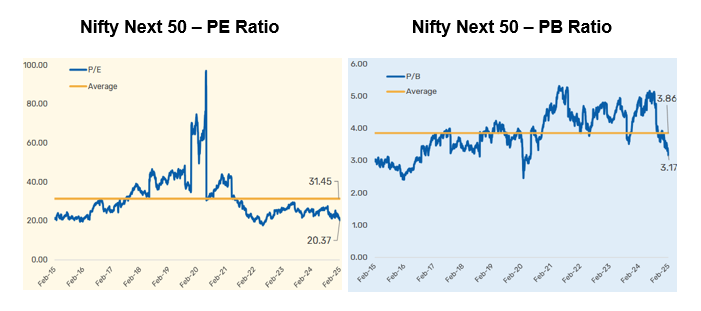Investors seeking broad exposure to the Indian equity market have increasingly turned to passive funds. These funds track an index rather than relying on active stock selection. In the context of mid- and large-cap stocks, the Nifty Next 50 has emerged as a significant benchmark, capturing companies that are poised to enter the Nifty 50 index. Understanding the role of passive funds in driving Nifty Next 50 growth offers insights into the evolving investment landscape.
Understanding Nifty Next 50
The Nifty Next 50 index represents the 50 companies that follow the Nifty 50 in terms of market capitalization and liquidity. These firms are often leaders in their respective sectors but are yet to enter the top 50 in India. Investors consider the Nifty Next 50 a bridge between large-cap stability and growth potential. The index provides a broader view of India’s equity market, reflecting companies that have room for expansion and can contribute to sectoral shifts over time.
Passive Funds and Their Mechanism
Passive funds, also known as index funds or exchange-traded funds (ETFs), replicate the performance of a specific index. In the case of Nifty Next 50, a passive fund holds all the constituent stocks of the index in the same proportion as the index. This approach removes the need for frequent stock picking, relying instead on the broader market’s performance.
These funds adjust their portfolios periodically to align with index rebalancing. As companies move in and out of the Nifty Next 50, passive funds update their holdings, maintaining accurate representation. This systematic approach reduces tracking error and ensures that investors experience returns closely aligned with the index.
Driving Nifty Next 50 Growth
Passive funds contribute to Nifty Next 50 growth through consistent investment inflows. When investors allocate capital to passive funds tracking the index, the demand for the constituent stocks rises. This increased demand can impact stock prices positively, influencing the overall performance of the Nifty Next 50.
Benefits for Investors
For individual investors, passive funds tracking the Nifty Next 50 provide a way to participate in the growth of companies outside the Nifty 50 without intensive research. The diversification within the index reduces concentration risk while offering exposure to multiple sectors. By investing in a single fund, an investor gains access to a basket of companies with potential to move into the Nifty 50 over time.
The cost efficiency of passive funds also plays a role. These funds typically have lower expense ratios compared to actively managed funds, as they require less human intervention for stock selection. This efficiency ensures that a larger portion of the investor’s money remains invested, compounding over time in line with index performance.
Additionally, the transparency of passive funds allows investors to track holdings and returns easily. With Nifty Next 50 tracking funds, the performance is predictable in relation to the index. Investors can make informed decisions regarding portfolio allocation, rebalancing, or risk management based on index trends.
Market Trends and Future Outlook
The Nifty Next 50 has demonstrated resilience across market cycles, reflecting the performance of emerging leaders in the Indian economy. Passive funds provide a structured channel for capital allocation to these companies. As more investors seek low-cost, diversified options, passive funds are likely to continue influencing the dynamics of the index.
Institutional adoption of passive strategies also supports Nifty Next 50 growth. Pension funds, insurance companies, and large wealth managers often use index funds to achieve market-linked returns. Their steady inflows can provide stability to the stocks within the index, mitigating volatility and enhancing long-term growth potential.
Considerations and Risks
While passive funds offer advantages, investors should understand the limitations. The performance of a passive fund is tied to the index; it does not outperform the Nifty Next 50. During periods of market decline, passive funds reflect the downturn without the possibility of tactical adjustments. Investors need to consider time horizon, risk tolerance, and the role of passive funds within a broader portfolio strategy.
Furthermore, concentration in certain sectors within the Nifty Next 50 can influence the fund’s returns. Although diversification exists, some sectors may dominate the index, affecting overall performance if those sectors face headwinds. Continuous monitoring of the index composition and market trends helps investors make informed decisions about allocation.
Conclusion
Passive funds play a critical role in driving the growth of the Nifty Next 50 by channeling consistent investment, enhancing liquidity, and increasing visibility for emerging companies. For investors, these funds offer an efficient and structured way to gain exposure to mid-cap and large-cap stocks with the potential to enter the Nifty 50.







